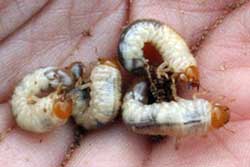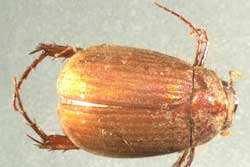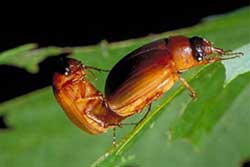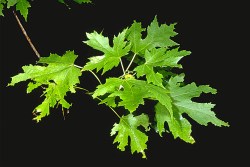Asiatic Garden Beetle—Maladera castanea
The Asiatic garden beetle attacks more than 100 plants, feeding on both foliage and blossoms, and sometimes completely destroying a plant. Favored hosts include butterfly bush, rose, dahlia, aster and chrysanthemum.
Adult beetles may be active from late June to the end of October, but do the most damage from mid-July to mid-August. They are attracted to porch lights on summer nights and feed at night, chewing irregular holes in host plants. Unlike Japanese beetles, adults notch, shred and strip foliage, rather than skeletonizing it. During the day, they hide in the ground. Beetle grubs feed on roots, damaging plants underground.
See also White Grubs
Click on images to view full-size
Identification and Control Information
- Fact Sheet: Asiatic Garden Beetle (PDF)—University of Massachusetts Extension
- Indiana's Most Unwanted Invasive Plant Pests: Asiatic Garden Beetle (PDF)—Indiana Cooperative Agricultural Pest Survey
- Fact Sheet: Asiatic Garden Beetle (PDF)—University of New Hampshire Cooperative Extension
- Beetles on Ornamental Plants (PDF)—University of New Hampshire Cooperative Extension
[Photos, left to right: MSU IPM Resources; Mike Reding & Betsy Anderson, USDA Agricultural Research Service, Bugwood.org; David Shetlar, Ohio State University; David Shetlar, Ohio State University]



